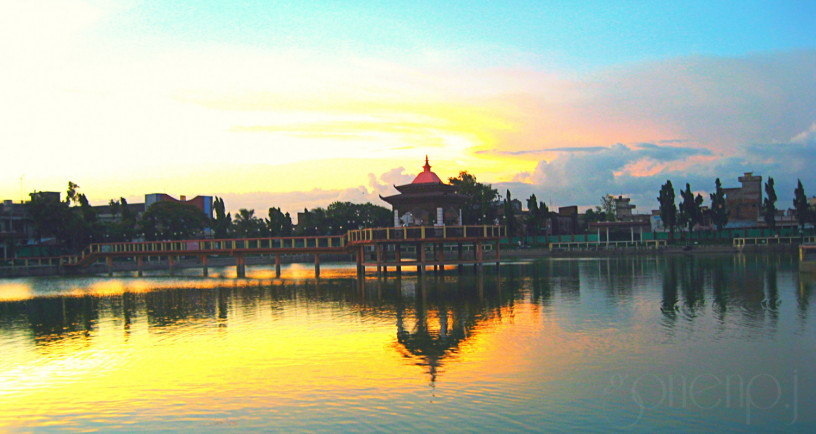Parsa: An Emerging Urban Center in Nepal Professional
Jul 9th, 2024 at 15:17 Blogs Parsa 407 views Reference: 1390Location: Parsa
Price: Contact us
Parsa: A Vibrant City in Southern Nepal
Parsa, located in the Terai region of southern Nepal, is a bustling city known for its economic vitality, cultural diversity, and strategic importance. As a significant urban center in Province No. 2, Parsa serves as an administrative, commercial, and cultural hub, playing a crucial role in the overall development of the region.
Historical Background
Parsa has a rich history that reflects the broader historical and cultural developments of the Terai region. The city has grown from a small settlement into a vital urban center due to its strategic location along ancient trade routes and its role as a commercial hub. Over the years, Parsa has witnessed significant growth and modernization, becoming an important part of Nepal's economic and cultural landscape.
Geographical Significance
Situated at an elevation of approximately 78 meters (256 feet) above sea level, Parsa enjoys a subtropical climate with hot summers, mild winters, and a monsoon season. The fertile plains of the Terai region support extensive agricultural activities, making Parsa an important center for agricultural production and trade. The city is well-connected by major highways, facilitating trade and transportation.
Economic Development
Parsa's economy is diverse, encompassing agriculture, trade, and services. The fertile lands around Parsa are ideal for growing various crops such as rice, wheat, maize, sugarcane, and vegetables. The region is also known for its production of fruits, especially mangoes and bananas. Agriculture remains a cornerstone of the local economy, employing a significant portion of the population.
Trade and commerce are vital to Parsa's economic landscape. The city's strategic location along the East-West Highway has made it a major trading hub. Parsa's markets are bustling with activity, offering a wide range of goods from agricultural produce to textiles and manufactured items. The proximity to the Indian border further enhances trade opportunities, facilitating cross-border commerce.
The service sector, including education, healthcare, and retail, has seen substantial growth in recent years. Parsa is home to numerous educational institutions, healthcare facilities, and commercial establishments that contribute to the overall economic development of the city.
Educational and Health Facilities
Parsa is emerging as an educational center in the southern plains of Nepal. The city hosts several schools, colleges, and technical institutes that provide quality education to students from the surrounding areas. Notable institutions include Parsa Multiple Campus and various public and private schools that offer education in diverse fields.
Healthcare facilities in Parsa have also seen significant improvements. The city is equipped with hospitals, clinics, and health centers that provide medical services and treatments to residents. The District Hospital in Parsa is a major healthcare provider, offering a range of medical services and playing a crucial role in the region's healthcare system.
Cultural Diversity
Parsa is known for its cultural diversity, with a population that includes various ethnic groups such as Maithili, Tharu, Yadav, Muslim, Brahmin, Chhetri, and others. This diversity is reflected in the city's festivals, traditions, and everyday life. Major festivals like Dashain, Tihar, Chhath, Eid, Holi, and Diwali are celebrated with great enthusiasm, showcasing the rich cultural heritage of the region.
The city is also known for its vibrant local arts and crafts, including traditional music, dance, and handicrafts. Visitors can experience the local culture through various cultural programs, fairs, and interactions with local artists and craftsmen.
Tourist Attractions
While Parsa itself is a bustling urban center, it also serves as a gateway to several natural and cultural attractions in the Parsa District:
1. Parsa National Park
Located near Parsa, this national park is a haven for wildlife enthusiasts and nature lovers. The park is home to diverse flora and fauna, including endangered species such as the Bengal tiger and Asian elephant. Visitors can explore the park through guided tours, wildlife safaris, and nature walks.
2. Chitwan National Park
A UNESCO World Heritage Site, Chitwan National Park is located a short distance from Parsa. The park offers opportunities for jungle safaris, bird watching, and exploring the rich biodiversity of the Terai region.
3. Local Temples
Parsa is home to several temples and religious sites that attract devotees and visitors. These temples, with their architectural beauty and spiritual significance, are an integral part of the city's cultural landscape.
Connectivity and Transport
Parsa is well-connected by road and has access to various transportation networks. The city is situated along the East-West Highway, a major road network that links it to other towns and cities in Nepal. Public and private transportation options, including buses, taxis, and auto-rickshaws, are readily available, facilitating convenient travel for residents and visitors.
Conclusion
Parsa is a dynamic and vibrant city that encapsulates the cultural diversity, economic vitality, and natural beauty of southern Nepal's Terai region. Its strategic location, rich history, and improving infrastructure make it an important center for commerce, education, and tourism. As Parsa continues to grow and develop, it holds promise for a brighter future, contributing significantly to the overall progress and prosperity of the Parsa District and the country as a whole.


